Disclosure: The views and opinions expressed herein belong solely to the authors and don’t symbolize the views and opinions of crypto.information editorials.
The cryptocurrency {industry} has infrastructure points which can be not often mentioned straight. We have to rethink blockchain structure as a result of we have now constructed our monetary techniques on blockchains that weren’t designed for finance.
abstract
- Basic-purpose blockchains are struggling to boost funds. Working them sequentially creates a bottleneck. Parallel processing is required to effectively scale monetary transactions.
- Composability will increase the worth of the ecosystem. Shared infrastructure primitives permit protocols to construct on one another, lowering fragmentation and enabling capital-efficient and worthwhile merchandise.
- Institutional adoption requires infrastructure in addition to capabilities. Permitted compliance, KYC, and audit modules on a decentralized system are stipulations for organizations to totally take part.
I noticed this the second I began constructing Momentum. Most protocols are launched as unbiased merchandise: DEXs, lending markets, and staking options, treating every as a separate instrument reasonably than a part of an interconnected system. Nevertheless, this fragmentation reveals deeper architectural mismatches. The blockchain layer beneath was not constructed to deal with the calls for of finance, reminiscent of large parallelism, composable primitives, and infrastructure that different protocols may reliably construct upon.
This isn’t a theoretical factor. This manifests as transaction failures throughout peak demand durations, capital inefficiencies in liquidity markets, and an ecosystem the place every protocol operates independently reasonably than synergistically.
You might also like: The following stage of on-chain finance requires regulatory infrastructure, not simply issuers. opinion
The actual limitation: Blockchain shouldn’t be designed for finance
When deciding the place to construct a DEX, the selection was apparent to me, however appeared counterintuitive to many. Everybody requested, “Why not Ethereum (ETH)?” The reply reveals the whole lot about how I take into consideration infrastructure.
Take into account the elemental distinction in how Ethereum and Sui (SUI) course of transactions. Ethereum’s sequential execution mannequin implies that all transactions should be processed in sequence, making a bottleneck underneath load. This was not a design bug in Ethereum. That was by no means the supposed use case. Ethereum was constructed as a general-purpose computing platform.
Finance requires one thing totally different. Most monetary operations are unbiased. If Alice exchanges tokens and Bob stakes property, these transactions are unbiased of one another. Sequential processing introduces synthetic congestion. Parallel processing is extra than simply an optimization. It is structurally needed.
Sui was constructed from the bottom up with parallel execution and object-centric design utilizing the Transfer programming language. This architectural selection is not only about velocity, it additionally permits fully totally different classes of economic merchandise to exist at scale.
The proof arrived ahead of we anticipated. In six months, our DEX scaled from zero liquidity to $500 million in each day buying and selling quantity, $1.1 billion in each day buying and selling quantity, and reached $22 billion in cumulative buying and selling quantity whereas onboarding 2.1 million customers with out vital congestion. Processing such volumes with out failing transactions shouldn’t be a advertising achievement. It’s proof of primary architectural soundness. Attempt reaching these metrics with a sequential blockchain and you may see precisely why structure issues.
Why infrastructure configurability is extra vital than particular person merchandise
There’s a second, extra refined drawback that I’ve come to appreciate. Which means monetary merchandise have to be composable constructing blocks, not remoted silos.
A well-designed monetary infrastructure layer ought to permit different protocols to be constructed on prime of shared primitives. If each protocol has to construct its personal monetary administration, its personal staking answer, its personal liquidity infrastructure, the ecosystem turns into fragmented. Builders spend their time fixing the identical issues as an alternative of innovating new issues. I’ve seen this occur repeatedly all through the chain.
That is the place most protocols fail. As soon as they efficiently construct one product, the ecosystem round it calcifies. Every new protocol primarily begins from scratch.
When constructing the protocol, we deliberately selected to do extra than simply create a DEX. We constructed infrastructure primitives that different protocols fairly select to make use of reasonably than rebuild. Our monetary administration answer, MSafe, at present protects lots of of hundreds of thousands of individuals throughout the Transfer ecosystem. Not as a result of we compelled adoption, however as a result of it solved an actual drawback higher than the options.
Extra protocols constructed on a shared infrastructure means extra integration factors, extra configurability, and extra system worth for everybody. This solely works if the primitives are literally good. Centralized liquidity market-making know-how with aligned incentives creates capital efficiencies that can not be achieved with conventional AMMs. Liquid staking, which generates receipt tokens with yield, concurrently creates extremely productive collateral. Dependable multi-signature treasury administration reduces friction in protocol governance.
These should not nice-to-haves. These are the variations between ecosystems that compound worth and ecosystems that fragment. This enables Momentum to offer the infrastructure that different protocols fairly select to construct on reasonably than rebuilding themselves.
The issue with institutional capital is infrastructure, not capabilities.
Digital currencies have all the time had issue in introducing techniques. Commonplace explanations give attention to regulatory uncertainties and UX limitations. The precise bottleneck is usually a lot less complicated. Establishments can’t use distributed infrastructure with out compliance capabilities.
That is no cause to centralize. That is why we construct the proper layers on prime of our decentralized infrastructure. With the ability to provide permissioned compliance as an non-compulsory module would resolve the issue with out compromise by permitting institutional customers to confirm their identification and transact with full regulatory readability whereas leaving the underlying infrastructure permissionless.
Academic establishments won’t make investments vital capital right into a system that can’t present regulatory audits, KYC verification, and compliance documentation. These should not options, however structural stipulations for a company to take part. It isn’t a gatekeeper. It is about acknowledging actuality.
precise argument
Aside from particular protocols, what I am claiming is: Blockchains constructed for common computation can’t perform effectively as monetary infrastructure. Finance requires architectures particularly designed for parallel processing, composable primitives, and institutional compliance. Protocols will migrate to blockchains with these traits. Not as a result of it is fashionable, however as a result of the economics of working with higher infrastructure are merely higher.
This isn’t a “Sui is healthier than Ethereum” argument. Ethereum can and will proceed to evolve. Layer 2 options are a authentic strategy. That is the argument that monetary techniques have to be constructed on a unique architectural basis than general-purpose computing platforms.
The corollary is much less apparent. As soon as blockchain is purpose-built for finance and significant adoption is achieved, it turns into a pure basis for monetary innovation. Not for advertising functions, however as a result of different protocols have fairly chosen to construct there.
The query for the {industry} shouldn’t be which chain will “win.” It is a matter of being prepared to confess {that a} one-size-fits-all blockchain structure was by no means the proper strategy, and that specialised infrastructure produces higher monetary outcomes.
This realization adjustments the whole lot about how protocols are constructed and the place they’re deployed. The best way I take into consideration Momentum is altering, and it ought to change the best way I take into consideration the place we construct subsequent.
learn extra: Whereas tokenization grabs the headlines, infrastructure will determine the winners | Opinion
chefwen
chefwen Founding father of Momentum, Transfer Central Liquidity Engine. With a robust engineering background together with senior software program engineering roles at Fb’s Libra and Amazon, Wendy combines deep technical experience and visionary management to construct scalable, industry-shaping options. Wendy holds a Grasp’s diploma in Laptop Engineering and a Grasp’s diploma in Operations Analysis in Industrial and Methods Engineering from Georgia Institute of Know-how. At Momentum, Wendy is spearheading the trouble to develop into the central liquidity engine of the Transfer ecosystem with the launch of the primary multi-chain ve(3,3) DEX. Presently Sui’s DEX no 1. Her mixture of superior technical acumen, entrepreneurial spirit, and cross-cultural perspective makes her a fascinating speaker for audiences keen on the way forward for Web3, innovation, and software program engineering.










